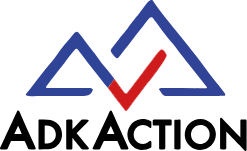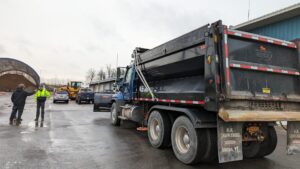Running along the Adirondacks’ eastern border, 125 mile-long Lake Champlain contains about 6.8 trillion gallons of water, and was once (if only briefly) considered to be a Great Lake. It is approximately 12 miles at its widest and reaches a depth of 400 feet. And of course, it is home to Champ, a lake monster who has resided in these cold fresh waters for hundreds, if not thousands of years. However, new evidence suggests that this long-lived leviathan is now suffering from a slew of health troubles, including high blood pressure, due to increased sodium intake.
According to the Lake Champlain Basin Program, the watershed of the lake covers 8,234 square miles (an area 19 times larger than the surface of the lake itself), draining rain and snow from New York, Vermont, and Québec. Unfortunately, water is not the only thing flowing into the lake. The rain and snowmelt of spring are carrying excess road salt into Lake Champlain, posing a threat to aquatic and terrestrial ecosystems, water quality, and infamous lake monsters.
It is widely acknowledged that when famed cryptozoologist Albert Samuel Gatschet managed to take Champ’s blood pressure for the first time in 1907, he noted that the fabulous beast was ‘fit as a fiddle.’ Unfortunately, it’s a different story now. Decades of road salt runoff has washed into the lake, leaving poor Champ as salty as a pickle in brine. Unless we take action now to reduce the amount of salt contaminating the lake, this gentle sea monster’s blood pressure could continue to rise, putting him at increased risk for heart disease and stroke.
Although protecting Champ is not one of the explicit goals of our work to reduce road salt in the Adirondacks, we hope that he will greatly benefit from our efforts and live on to delight and mystify future generations. Check out AdkAction.org/Salt and the resources below to learn how you can help ensure fresh water for lake monsters and humans for generations to come. Working together, we can save Champ.
Happy April Fools’ Day! We may not be 100% serious about Champ, but we’re very serious about protecting water in the Adirondacks. Learn more about the problem and what you can do to help at AdkAction.org/Salt, and explore our ongoing work to stop road salt pollution on our Road Salt Reduction project page.
You can also check out:
Paul Smith’s College Adirondack Watershed Institute – Road Salt Research
Lake Champlain Sea Grant – Road Salt & Water Quality
Adirondack Council – The Cost of Road Salt in the Adirondack Park
Ausable River Association – Road Salt Threat
A rare sighting on land:





